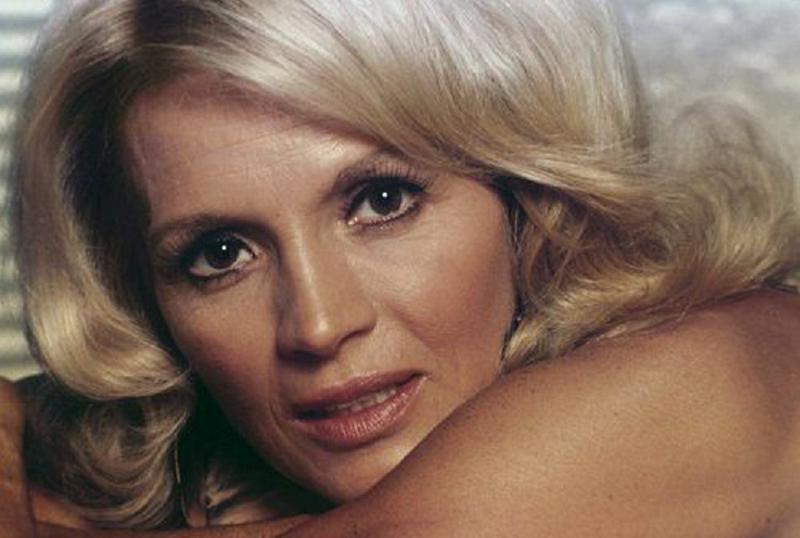Angie Dickinson: The Star Who Transformed Television Roles For Women
By | December 10, 2021


Her Auspicious Beginnings
Angeline Brown was born on September 30, 1931, in Kulm, North Dakota to a newspaper publisher and editor. She lived in North Dakota until she was 10 when her family moved to Burbank, California. She graduated in 1954, with the intent of becoming a writer, but before she graduated, she had married Gene Dickinson, a football player, in 1952. They remained married until 1960, and after the divorce, she kept his last name.
Her first step into show business was when she was in a preliminary beauty pageant for Miss America. Although she only came in second, she did come to the attention of a casting agent. The agent helped her to land her first job in show business, as one of six showgirls on The Jimmy Durante Show. While on this show, a television producer noticed her and convinced her to think about an acting career. After studying acting for a few years, NBC approached her and she guest-starred on a few television shows, including The Colgate Comedy Hour. During this time, she met Frank Sinatra, who she would become friends with, and who she was later cast opposite in Ocean’s 11 (1960).

Her Acting Career Takes Off
Her television acting career really began in 1954, when she had her debut in an episode of Death Valley Days. This appearance led to a number of roles on television shows including Matinee Theater, It’s a Great Life, Great Ghost, and Gunsmoke. The television appearances continued throughout the 1950s, and in 1954, she started appearing in films as well with an uncredited role in Lucky Me. Her first starring role then came in Gun the Man Down (1956). At this point, she was appearing mainly in B-movies and Westerns, and in 1959, she had her real breakthrough role, playing a gambler named “Feathers” who is attracted to the town sheriff played by John Wayne in Howard Hawks’ Rio Bravo. After this, she became one of the more prominent leading ladies during the 1960s. Her films included Fever in the Blood (1961), Rome Adventure (1962), and The Killers (1964), in which she acted opposite Ronald Reagan in his final movie role. In 1964, she co-starred in The Art of Love, and in 1966, she joined Marlon Brando, Jane Fonda, Robert Redford, and Robert Duvall in The Chase. Some consider her best film during this period to be Point Blank (1967), and she continued to appear in Westerns, including Sam Whiskey (1969), when she gave Burt Reynolds his first on-screen kiss. In 1965, she married for the second time, to composer Burt Bacharach. They had one child, a daughter, and divorced in 1981.

Leading The Way For Other Actresses In Police Woman
Her films continued in the 1970s, including Big Bad Mama in 1974 with William Shatner and Tom Skerritt. For the film, which became one of her best known, she appeared nude in several scenes. In 1974, she also returned to television, appearing in Police Story, the acclaimed NBC anthology series. Because of the popularity of her appearance, NBC offered Dickinson her own series, Police Woman. As Sergeant Leann “Pepper” Anderson, she was an officer in the LAPD’s Criminal Conspiracy unit. For the role, she won a Golden Globe and was nominated for an Emmy for Best Lead Actress in a Dramatic Series three consecutive years. The show lasted four seasons, and, in 1987, the LAPD awarded her an honorary doctorate; she also received her star on Hollywood’s Walk of Fame for her contributions to television. The show led the way for women to play the title roles in later television dramas.

Her Career After Police Woman
In the 1980s, her career quieted down a bit. She returned to the big screen in Brian De Palma’s Dressed to Kill (1980) and gained notice for her portrayal of Kate Miller, a sexually frustrated New York housewife; she won a Saturn Award for Best Actress for the role. She turned down the role of Krystle Carrington on Dynasty to spend more time with her daughter, and later, turned down the role of Sable Colby on the Dynasty spin-off, The Colby’s. She also turned down a sitcom, The Angie Dickinson Show after two episodes were shot. She did appear in several television movies throughout the ‘80s, and she reprised her role as Wilma McClatchie in Big Bad Mama II (1987).

Her Career Lives On
She was one of the stars of Oliver Stone’s five-hour mini-series, Wild Palms in 1993. In 1995, she was cast in the remake of Sabrina, and the next year, she played Burt Reynold’s wife in The Maddening. In 2000, she played the alcoholic, homeless mother of Helen Hunt’s character in Pay It Forward (2000) the grandmother of Gwyneth Paltrow’s character in Duets (2000). She had a cameo in the 2001 remake of Ocean’s 11, and she appeared in the second season of Bravo’s Celebrity Poker Showdown in 2004. In 2009, she was in a Hallmark Channel film, Mending Fences.
